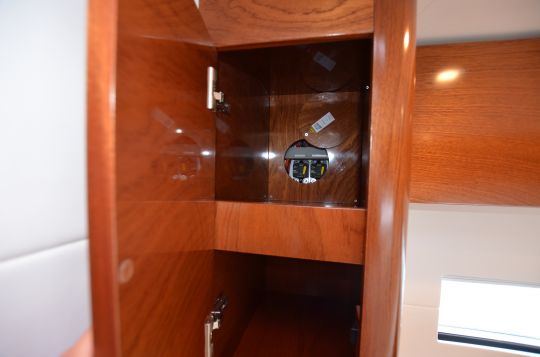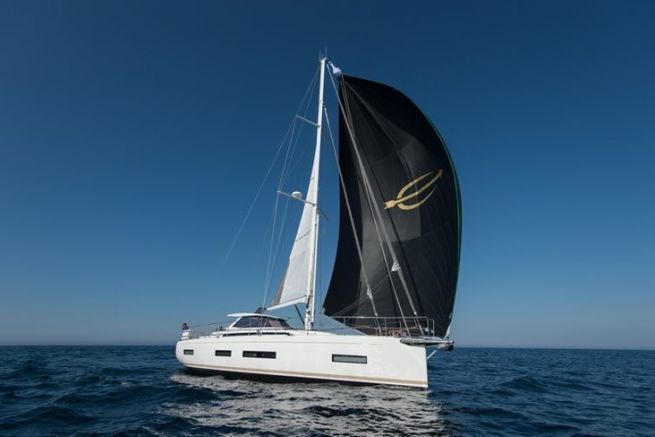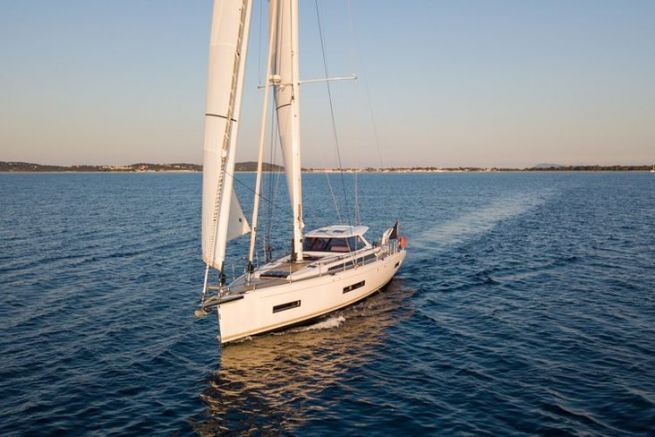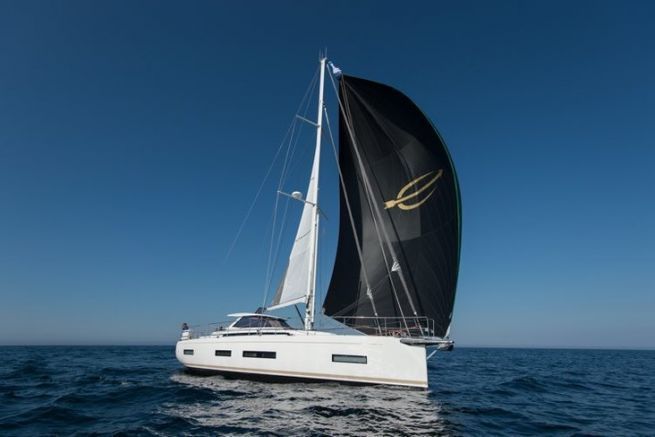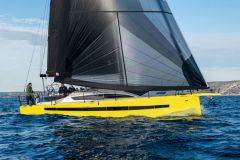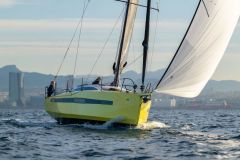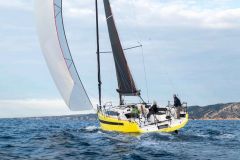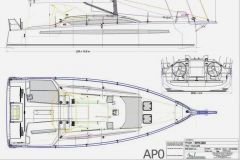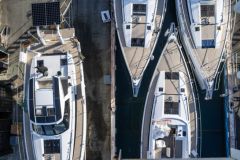Automated maneuvers
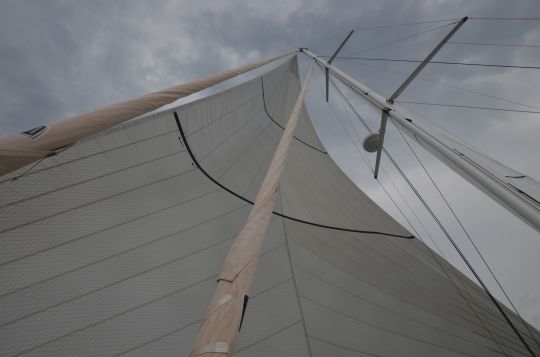
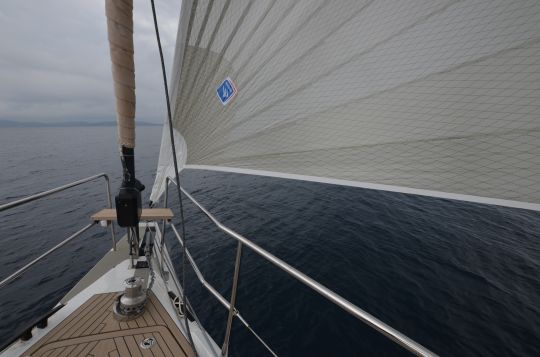
The well-sized sloop rig can be transformed into a cutter by adding an optional self-steering staysail. The downwind sails are hoisted on a bowsprit. Despite all these sails, the manoeuvring plan is simple. Apart from the spinnaker or gennaker, everything is done without moving from the cockpit from the black console that groups together the controls for the electric mainsail and headsail furlers. This console also controls the sheeting winches, which are reversible as an option and allow you to shock with one finger to lower. This is a fully automated yacht and we look forward to sailing to see how well everything works at sea.
The button sail
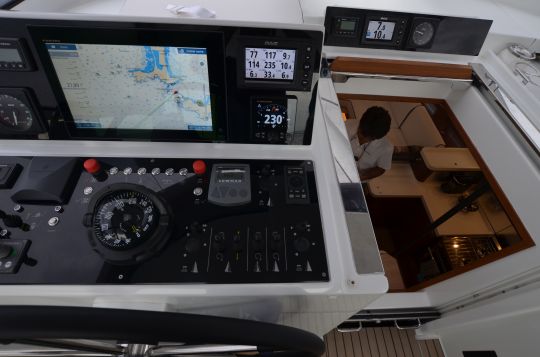
Once out of the port of Hyères, only two fingers are needed to unfurl the mainsail and genoa in just a few seconds. One hand is used to operate the unfurling system and the other is used to engage it, having taken care to turn the sheets on the winches beforehand. We're heading off to round the island of Grand Ribau, which will give us the opportunity to sail at all points of sail. Upwind, at 7 knots, the helm is gentle, the control provided by the bisafricans is reassuring and the small changes of point of sail more or less close to the wind are punctuated by pressing the buttons to adapt the setting. Only special care is needed when shocking, as a hull can form upstream of the winch and block the sheet in the self tailing.
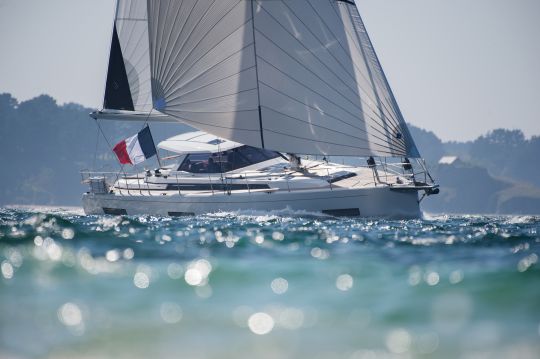
Fast canopy reduction
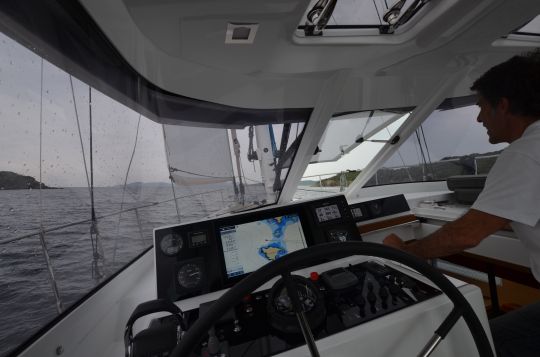
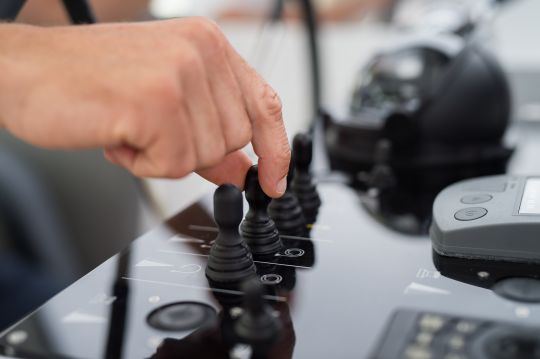
Falling around the island, we unfurl the gennaker and the boat lengthens the stride to 9 knots, then sailing around the island, the wind forced a little into the gully which makes us return to the westerly in the Bay of Hyères. All we have to do is roll up the gennaker, unfurl the staysail mounted on a self-tacking rail and furl a bit of mainsail in no time at all. It wasn't necessary to reduce the mainsail, but it's so easy that you can't help yourself! If a blockage occurs, the fuses disconnect and you can easily intervene to re-feed through a hatch at the bottom of a crew. On the engine, you just notice that the composite hard top doesn't absorb the noise well and a resonance is invited in the cockpit. A point that could be improved.
